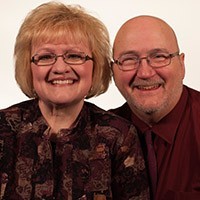EUROPE
Europe’s introduction to Christianity is recorded in Acts 16 when God sovereignly directed the apostle Paul and his companions to the Roman colony of Macedonia (today’s Greece). The group traveled to Philippi, the nation’s most prominent city of the day, where they established a stable church. Persecution drove them west to Thessalonica and Berea and south to Athens and Corinth, and in each place a church was established.
HISTORY
Nearly 19 centuries later, word of the outpouring of the Holy Spirit and the Azusa Street Revival in Los Angeles, California, reached across the Atlantic. As Spirit-baptized European believers returned home to tell of their infilling, indigenous Pentecostal fellowships sprang up.
Thomas Barratt, a Norwegian, was baptized in the Spirit in New York City. In 1906 he introduced the Pentecostal message to his native Norway and much of Europe. He inspired other Pentecostal leaders on the continent, and the church he planted, Filadelfia Church in Oslo, became a great missionary-sending fellowship.
Nicholas Nikoloff immigrated to the United States from Bulgaria and was baptized in the Holy Spirit at a New York City Assemblies of God church in 1920. He returned to Bulgaria six years later and led the nation’s first Pentecostal churches. He also was instrumental in developing the Pentecostal Bible school in Gdansk, Poland, that trained pastors who served throughout the continent.
WWII significantly impacted the church. The U.S. Assemblies of God contributed significantly to relief efforts in Europe, and by 1950 nearly 20 AG missionaries were ministering on the continent. The majority of Europeans had been baptized in state churches, but the cathedrals’ dwindling congregations revealed apathy and disinterest in religion. Europe had become a spiritual vacuum.
God moved among Pentecostal churches, however, and the number of AG missionaries grew. During the next several decades, Bible schools were established in several countries. Many people in Western Europe came to Christ at Good News crusades. Missionaries planted churches and established Europe Teen Challenge as well as ministries to the U.S. military, Gypsies and university students. International Correspondence Institute (now Global University) and International Media Ministries selected Europe as their base of ministry.
Today, the U.S. AG team includes 355 missionaries and 123 missionary associates who partner with 38 Pentecostal fellowships in 36 countries. More than 2.5 million people worship each week in Pentecostal churches.
UNREACHED PEOPLE GROUPS
Since World War II, Europe has seen a mass influx of immigrants from South America, the Middle East and Africa. As a result, the face of Europe has changed. Statisticians estimate that immigrants account for more than 5 percent of the total populations in Germany, England, Spain, France, Belgium, Netherlands and Italy. In 2006 more than half of the babies born in London had foreign-born mothers.
Italy is projected to lose 28 percent of its Italian-born population by 2050. The immigrant Chinese population in France numbers nearly 1 million, and one out of every eight people in Germany are from Turkey. Immigrants comprise 38 percent of elementary-age students in Norway. Some predict that Muslims will outnumber non-Muslims by the middle of the century. Each of these cultural groupings represents an unreached people group that needs the gospel.
While many nonimmigrant Europeans describe themselves as Christians, they do not understand its true meaning and are biblically illiterate. Less than 10 percent of people living in Western Europe attend church at least once a month. One missionary now describes the continent as “spiritually exhausted.” Greg Mundis, Europe’s regional director, says, “Twenty-two states in Europe have an evangelical population of 1 percent or less.”
CHALLENGES
The challenges in Europe increase every day.
- Prior to World War II, about 50 major languages were spoken on the continent. Today, it’s not uncommon to hear Arabic, Farsi, Chinese, Tagalog or one of hundreds of African dialects daily on a city street.
- The world economy, decline of the U.S. dollar and increased value of the euro have caused an immense strain on missionary budgets.
- Nearly 90 percent of Europe’s population lives in urban areas.
- Some European countries face political instability.
- In several areas, church leaders and missionaries are having difficulty in acquiring adequate facilities for churches. This is especially true in France.
- More than 9,000 babies are abandoned each year in Romania.
“The continent is rich in heritage, culture, academics and philosophy but poor in faith,” says Mundis. “It chose this poverty because of the deceit of materialism, secularism, communism, nihilism and the rejection of God.”
HOW TO PRAY
Missionaries and believers across Europe are seeking God. Some national fellowships have set aside specific times of concentrated prayer for the renewal of true Christianity within their nation and the continent. Will you join them?
Pray that…
- The Holy Spirit will guide missionaries, national church leaders and believers and equip them for the task of reaching the lost.
- God will provide financially for missionaries as prices rise against the U.S. dollar.
- God will give favor and provision to missionaries and national believers as they seek to plant national and international churches.
- National believers will be burdened to reach their immigrant neighbors.
- Congregations will be able to find adequate facilities to rent and purchase.
- Evangelism and compassion outreaches will be effective in reaching communities for Christ.
- The biblically mandated mission for the Assemblies of God missionary team in Europe is to accelerate the spread of the gospel and model the integrity of the New Testament missionary on this spiritually needy continent. With the help of the Holy Spirit, Europe will be vibrant in faith again and ready to spread the gospel to other needy areas of the world.
(Source: Assemblies of God World Missions)
CCC Regional Directors
Matt & Nancy Place

